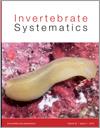Phanerophthalmus is a genus of Indo-West Pacific sea slugs inhabiting seagrass and coral reefs with up to now seven species currently recognised as valid. The goals of this study are to revise the systematics of Phanerophthalmus, infer its phylogeny and patterns of diversity, as well as study its diet. Morphology was combined with molecular phylogenetics based on two mitochondrial (cytochrome c oxidase subunit I, 16S rRNA) and one nuclear (28S rRNA) genes. Molecular species delimitation methods (ABGD, DISSECT) were employed to aid delimiting species. Diet was assessed by gut content analysis. Seventeen species were recognised, 10 of them new to science (P. albotriangulatum, sp. nov., P. anettae, sp. nov., P. batangas, sp. nov., P. boucheti, sp. nov., P. cerverai, sp. nov., P. lentigines, sp. nov., P. paulayi, sp. nov., P. purpura, sp. nov., P. rudmani, sp. nov., P. tibiricae, sp. nov.). Phanerophthalmus has its highest diversity in the Western Pacific where 13 species occur with a peak in the Coral Triangle (11 species; three only known from here). Diversity decreases towards the Central Pacific with five species and Indian Ocean/Red Sea with four species. Only two species are distributed across the Indo-West Pacific. Preliminary gut content analysis suggests these slugs feed on diatoms.
How to translate text using browser tools
4 December 2018
Systematic revision, diversity patterns and trophic ecology of the tropical Indo-West Pacific sea slug genus Phanerophthalmus A. Adams, 1850 (Cephalaspidea, Haminoeidae)
Jennifer Austin,
Terrence Gosliner,
Manuel A. E. Malaquias
ACCESS THE FULL ARTICLE

Invertebrate Systematics
Vol. 32 • No. 6
December 2018
Vol. 32 • No. 6
December 2018
Coral reefs
Gastropoda
Heterobranchia
Indian Ocean
marine biodiversity
Mollusca
Pacific Ocean




